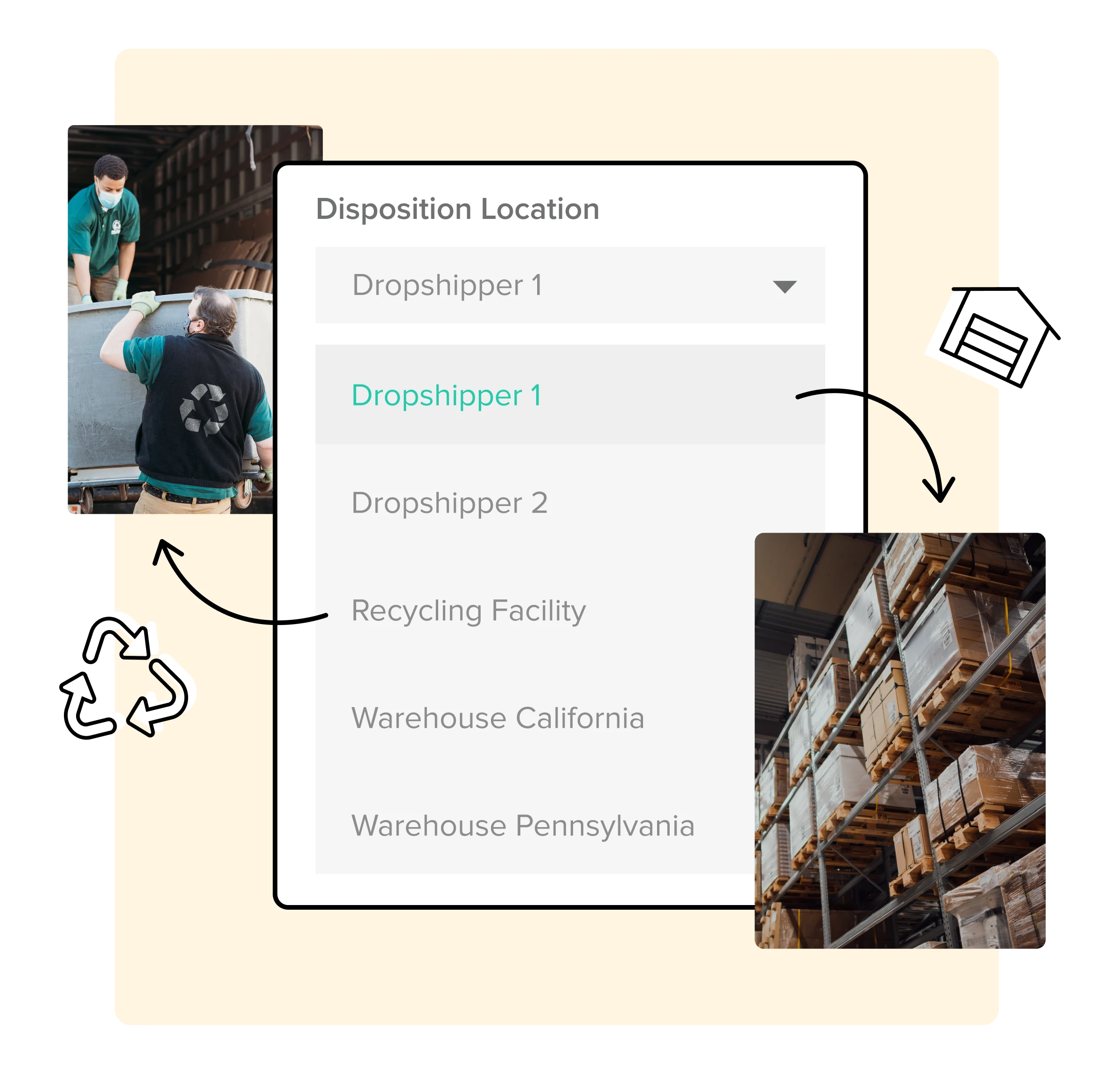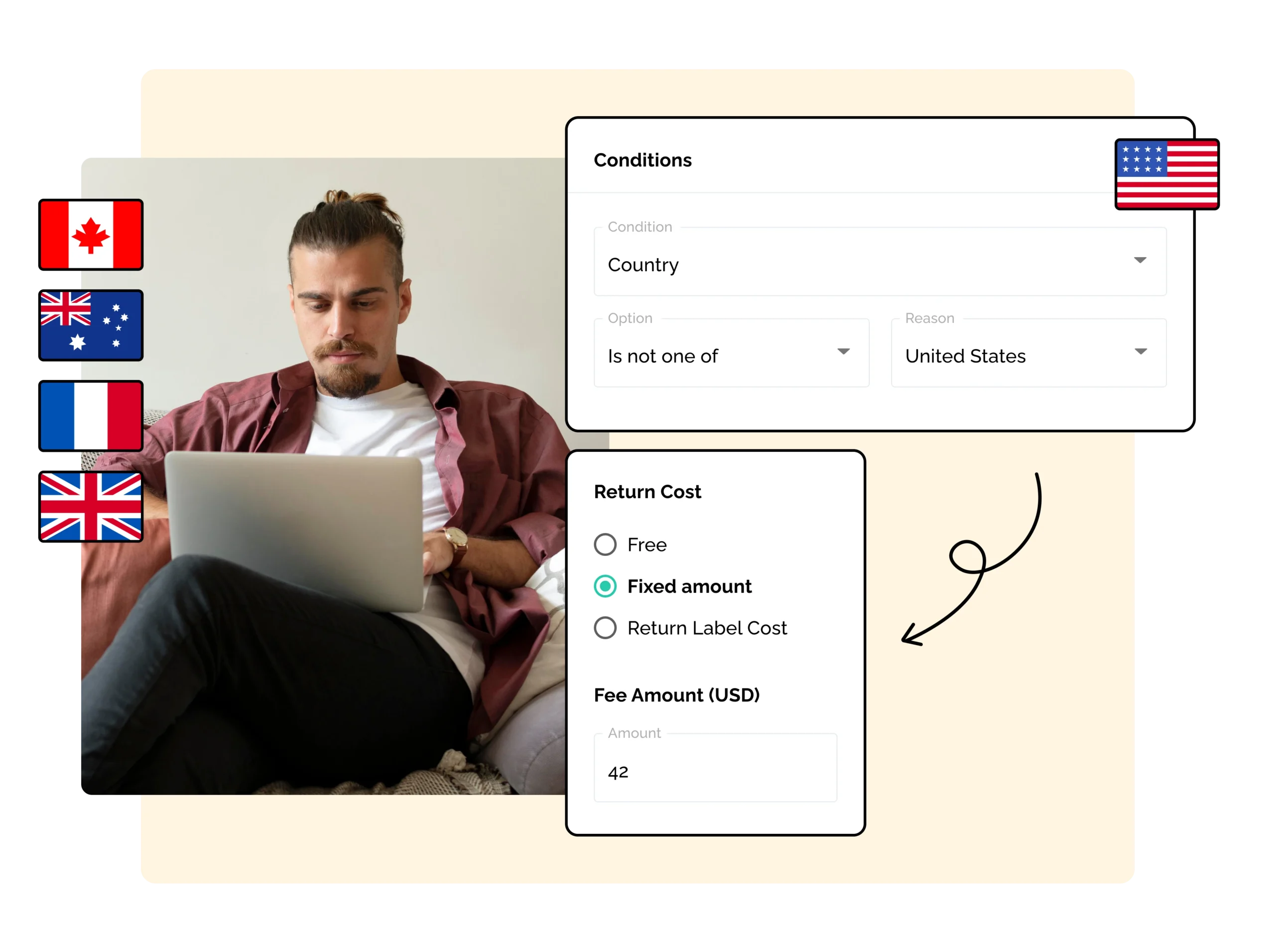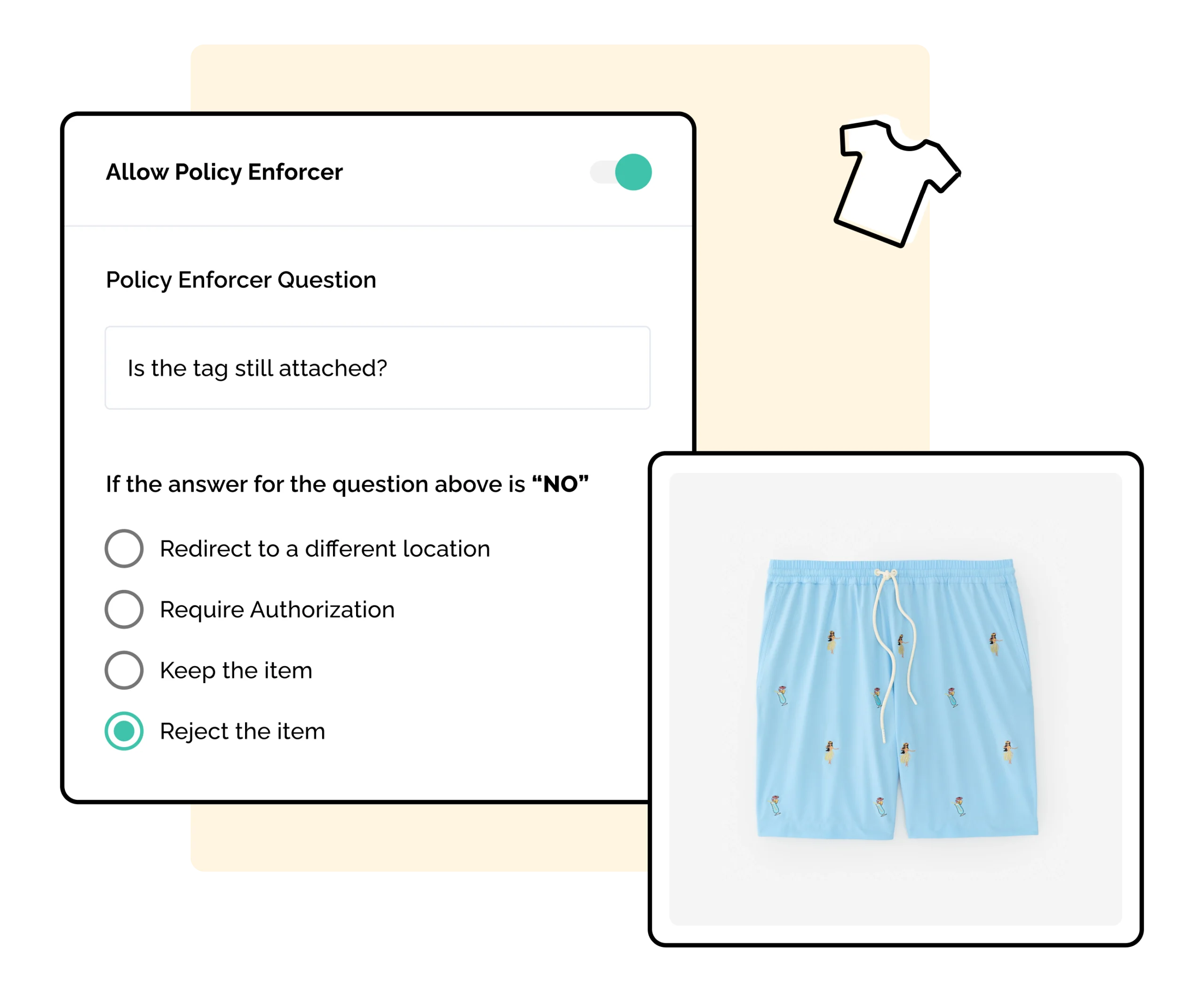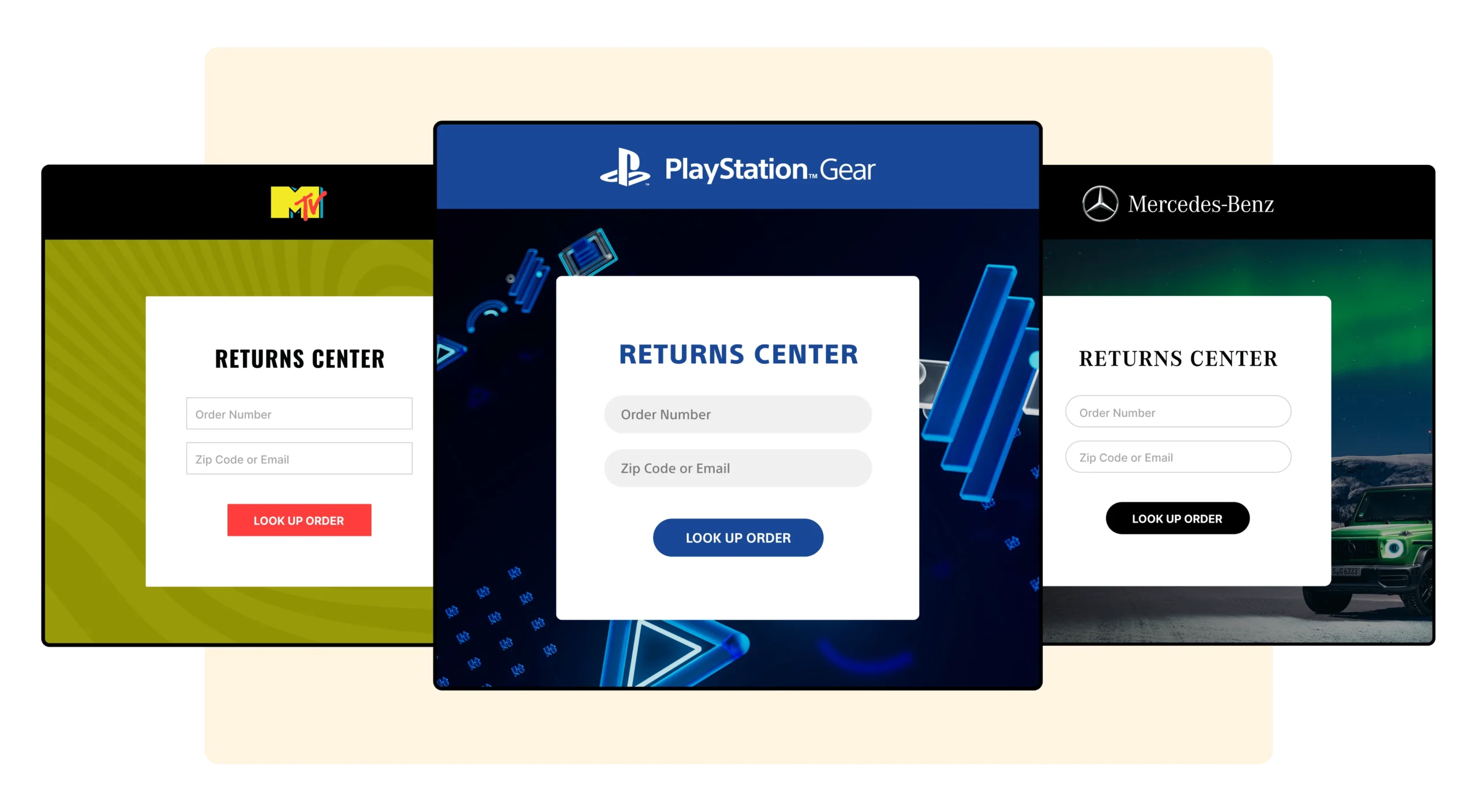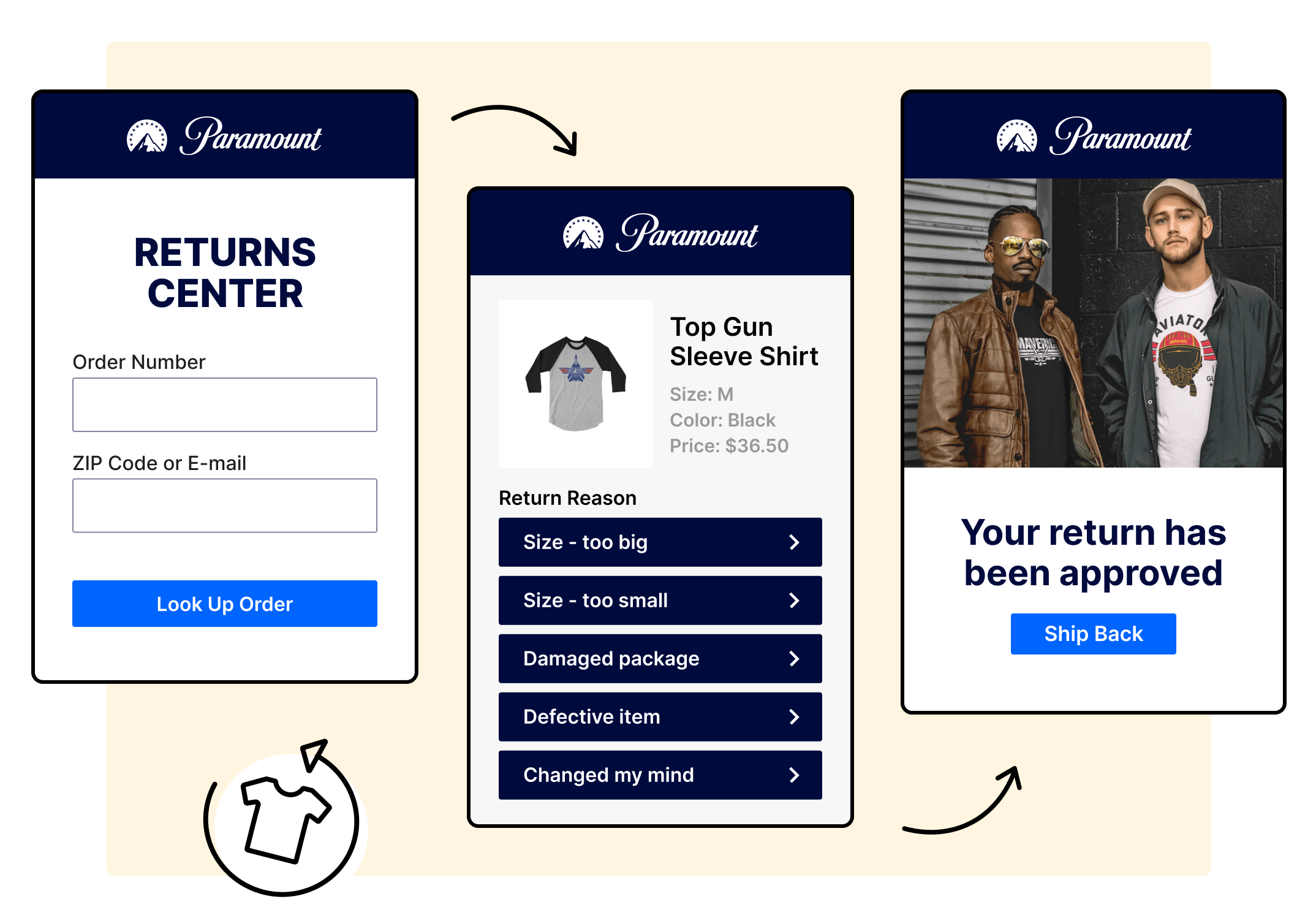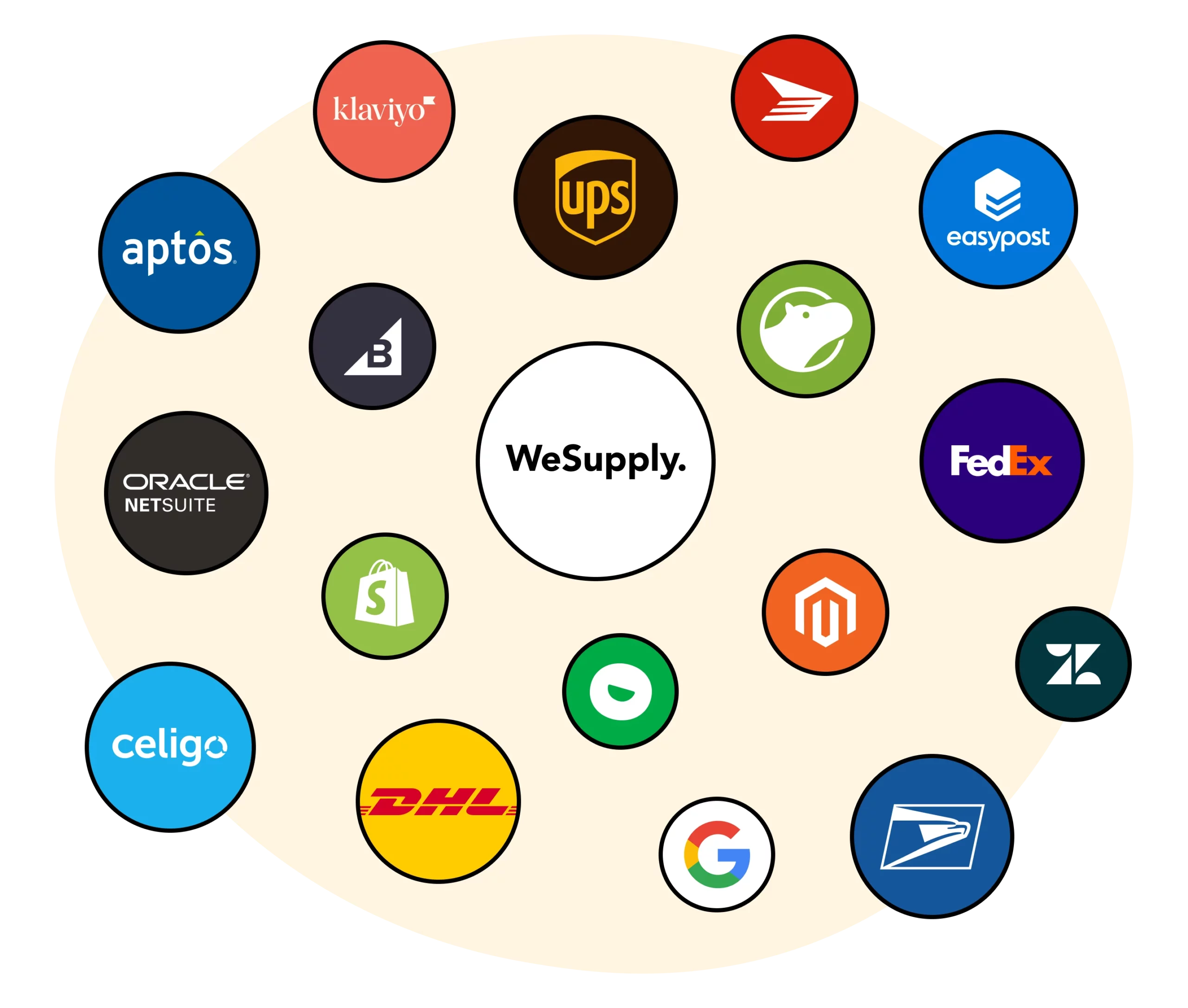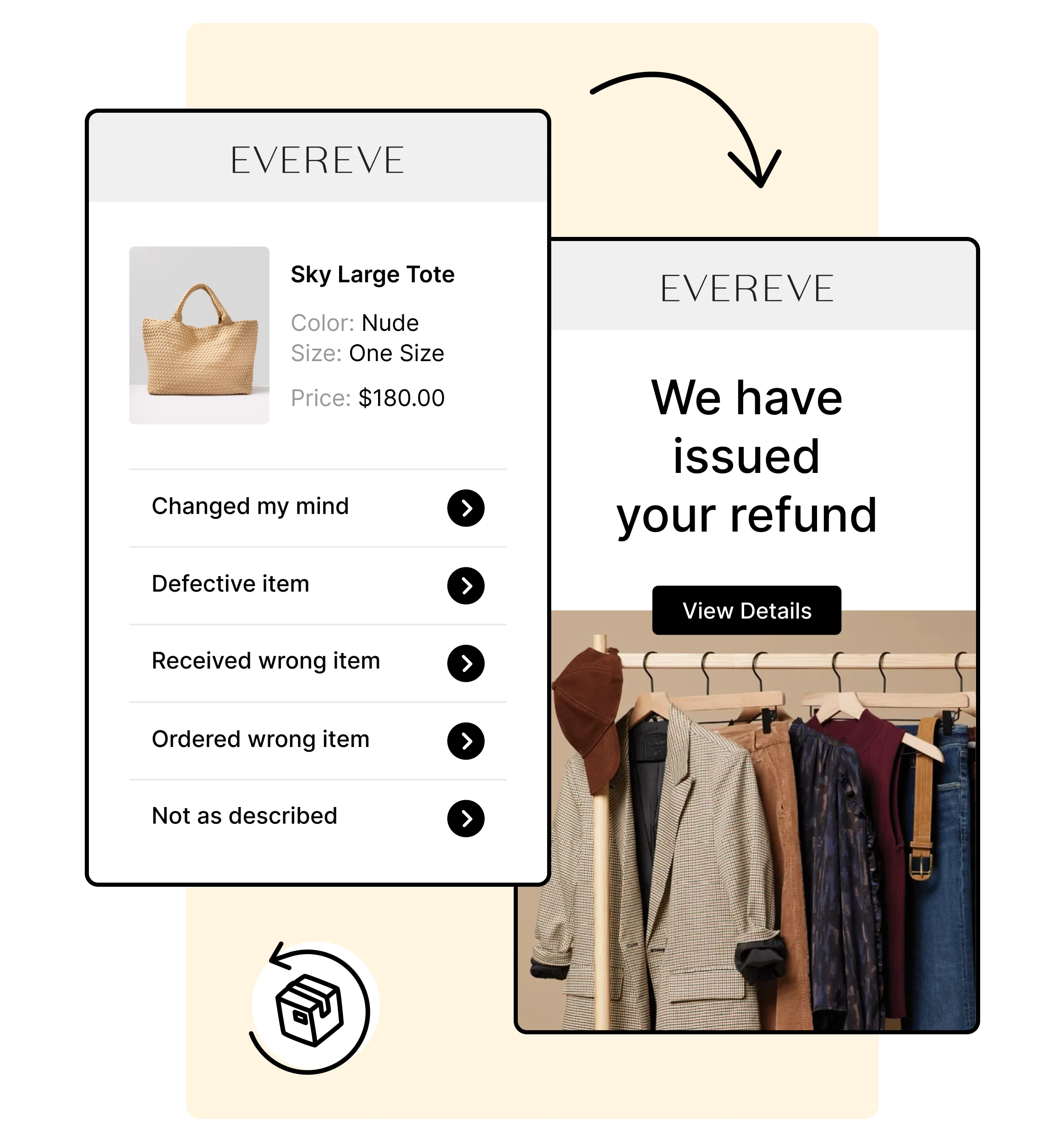Expert Tips for Handling Print-On-Demand Returns
Handling returns is a critical part of running a print-on-demand business. This article offers expert tips for handling print on demand returns efficiently. Learn to craft effective return policies, manage customer expectations, and minimize financial loss. Follow these expert tips to streamline your return process and enhance customer satisfaction.
Key Takeaways
-
Develop a clear and structured return policy to enhance customer trust and satisfaction, which can significantly reduce return rates.
-
Understanding and addressing common causes of returns, such as quality issues and inaccurate product descriptions, can help minimize losses.
-
Effective collaboration with POD suppliers and leveraging automated return management tools can streamline the returns process and boost overall efficiency.
-
Managing Print-On-Demand (POD) returns is easier with WeSupply. From integration to tailored policies, SKU analytics, and self-service portals, we streamline operations, reduce costs, and enhance satisfaction.
Introduction: Why Returns Matter in Print-On-Demand (POD)
Print-on-demand returns are a unique beast. Unlike traditional retail, where returns might be as simple as restocking an item, POD businesses often deal with customized products that can’t be resold. This makes managing returns not only challenging but also critical for maintaining profitability.
An effective return strategy is crucial. It’s not just about handling customer returns efficiently but also about ensuring that these returns don’t eat into your profit margins. Understanding the nuances of POD returns helps develop strategies to mitigate losses and maintain smooth business operations.
Expert insights can help streamline your return management process, making it easier to handle returns and keep your customers happy. This guide will explore various aspects of the return process, including legal requirements, crafting effective policies, and optimizing for maximum efficiency.
Mastering the Basics of Print-on-Demand Returns
Understanding the returns process is essential for any print-on-demand business. Returns are inevitable, but how you handle them can make a significant difference in maintaining profitability and customer satisfaction. A solid return policy can enhance customer retention and trust, making customers feel more comfortable purchasing from your online store.
We will cover the importance of a smart return plan and the common causes of returns in print-on-demand. These insights will help you develop a robust return and refund policy that meets customer expectations and minimizes the impact on your business.
The Importance of a Smart Return Plan
Planning for returns is key to long-term success in the print-on-demand business. A well-structured return policy can significantly boost customer trust and influence their likelihood of returning for future purchases. Most customers prefer clear return guidelines, and a negative return experience can deter them from shopping with you again.
Easy return policies can reduce return rates from 20-30% to 10-15%, making a significant impact on your bottom line. A clear return policy can deter potential return requests before they occur, saving time and resources. Additionally, having well-defined refund policies can further enhance customer satisfaction.
A well-defined return strategy can alleviate stress and confusion for sellers, making the process smoother and more manageable. Planning for accepting returns not only minimizes losses but also enhances customer satisfaction and loyalty.
Common Causes of Returns in Print-On-Demand
Understanding the common causes of returns can help you address issues proactively. Product defects, misprints, and quality issues are among the top reasons for returns in the print-on-demand industry. Quality issues, including printing errors, account for a substantial portion of customer dissatisfaction.
Inaccurate product descriptions and sizing problems are other significant contributors to returns. Detailed and accurate product descriptions help set the right customer expectations and reduce return rates.
High-quality product images can also play a crucial role in reducing misunderstandings about the item’s appearance. By providing clear and accurate images, you can mitigate the risk of returns due to unrealistic customer expectations.
Navigating Legal Requirements for POD Returns
Compliance with regional laws is crucial for print-on-demand sellers. Understanding the legal landscape for returns can help you ensure that your return policies are in line with regulations, preventing potential disputes.
Different regions have different requirements when it comes to returns, and being aware of these can help you manage customer expectations and build trust. In the next subsection, we will delve into the regional legal considerations for returns, focusing on the US, UK, and EU.
Regional Legal Considerations for Returns
In the US, UK, and EU, return policies vary significantly. For instance, in the EU, consumers have specific rights regarding returns, including a 14-day cooling-off period. Customized products often fall outside standard return policies due to their unique nature.
In the UK, personalized items typically do not qualify for return if the customer decides to change their mind. However, legislation may mandate returns for damaged products, necessitating refunds or exchanges.
Often required by law, clear return policies should be prominently displayed on websites. Legal compliance in return policies not only enhances customer trust but also mitigates disputes.
Crafting an Effective Return and Refund Policy
A well-defined return policy is crucial for managing returns effectively. It can significantly reduce customer anxiety by providing clear guidelines on how returns are handled. This clarity not only enhances customer trust but also improves overall satisfaction.
We will discuss the key elements of a strong return policy and how to communicate it clearly to customers. These steps will help you manage returns more efficiently and keep your customers happy.
Key Elements of a Strong Return Policy
Every print-on-demand return policy should include essential components to ensure smooth handling of returns. Clear refund and exchange rules are crucial to prevent misunderstandings and ensure a positive customer experience.
Return policies should specify the conditions under which returns are accepted, particularly distinguishing between defective items and buyer’s remorse. Product customization affects return policies, as personalized items typically require stricter no-return rules.
Establishing specific return criteria for various product types can help mitigate potential losses. A clear outline of return procedures helps customers understand what actions to take when initiating a return.
Communicating Your Return Policy Clearly
Using simple language and visual aids can help customers understand your return policy better. Ensuring visibility of your policy across all sales channels is also crucial to foster transparency and customer confidence.
Using straightforward language in your return policy helps set realistic customer expectations and avoid confusion. Displaying return policy information prominently across your site further enhances transparency and customer trust.
Incorporating visual tools like infographics can enhance customer comprehension of the return process, making it easier for them to follow the steps.
How WeSupply Can Help Craft Effective Return and Refund Policies
WeSupply empowers businesses to design and implement flexible, efficient, and customer-friendly return and refund policies tailored to their unique needs. By leveraging automation and customization, WeSupply ensures your policies work seamlessly across regions, product types, and customer scenarios, reducing operational complexity and enhancing customer satisfaction.
Key Features WeSupply Offers for Crafting Effective Return Policies:
- Custom Return Policies: Tailor your policies to handle final sales, return windows, and request approvals by country, region, product type, return reason, or resolution type.
-
Controlled Return Destinations: Direct returned products to specific locations, such as regional hubs, 3PLs, repair centers, or donation facilities, for maximum operational efficiency.
-
International Return Rules: Configure region-specific rules, such as using unique return addresses, charging return shipping, or restricting returns entirely for certain countries.
-
Policy Enforcer: Automate the approval, rejection, or flagging of returns and exchanges based on pre-defined conditions, ensuring even the most complex policies are handled effortlessly.
With WeSupply, crafting a return and refund policy is no longer a challenge but a strategic advantage that balances flexibility, automation, and customer satisfaction. Transform your policies today!
Optimizing the Return Process for Efficiency
Streamlining the return process can significantly enhance customer satisfaction and operational efficiency. Implementing a detailed return policy can reduce confusion and help manage customer expectations.
The following subsections will provide a step-by-step guide to handling returns and discuss the role of automation in return management. These insights will help you optimize your return process for maximum efficiency.
Step-by-Step Guide to Handling Returns
Verifying return claims with customer-provided proof is the first step in handling returns effectively. Managing return shipping involves deciding when to cover costs and when to charge customers, which should be clearly indicated in your return policy.
Best practices for handling replacements vs. refunds include maintaining clear communication with customers throughout the return process to improve their overall experience. Using automated return authorization can speed up the return process and reduce manual errors.
Providing pre-written responses for return inquiries can save time and streamline communication with customers. Establishing what qualifies as a valid return is crucial to effectively manage customer claims.
The Role of Automation in Return Management
Automated tools can significantly improve the efficiency and accuracy of your return management process. Self-service return portals enhance customer convenience and reduce the workload on support teams. Tracking return trends using automated systems can help businesses identify areas for improvement in their return policies.
Self-service portals allow customers to initiate returns without needing to contact support, improving satisfaction. Analyzing return data can provide insights into patterns that help businesses improve product offerings and reduce future returns.
How WeSupply Can Help with Optimizing the Return Process for Efficiency
WeSupply streamlines the return process, creating a seamless and efficient experience for both businesses and customers. By combining automation, personalization, and flexibility, WeSupply transforms returns from a pain point into an opportunity to enhance customer loyalty and operational efficiency.
Key Features WeSupply Offers for Optimizing Returns:
-
Branded Returns Portal: Provide a seamless, omnichannel return experience by keeping customers engaged with your brand instead of redirecting them to third-party pages.
-
Self-Service Returns: Empower customers with complete control over their return process, saving time for both your team and the customer.
-
Flexible Return Rules: Customize return policies and processes to accommodate unique use cases and ensure a hassle-free experience.
-
Autogenerated QR Code Labels: Simplify returns by eliminating the need for customers to print labels, allowing them to scan a QR code directly from their email.
-
Returns Tracking: Offer customers real-time updates on the status of their returns with an easy-to-use tracking feature.
-
Proactive Notifications: Send personalized post-purchase emails and SMS updates to keep customers informed and engaged throughout the return process.
-
Instant Store Credit: Incentivize exchanges over refunds with instant credit options that reduce return rates and boost average order value.
With WeSupply, optimizing your return process is seamless, efficient, and customer-focused, ensuring satisfaction while saving time and boosting sales. Transform your returns into a strategic advantage today!
Reducing Return Rates Through Proactive Measures
Establishing a comprehensive return policy can lead to better customer trust and lower return rates. Proactive measures such as rigorous quality control, detailed product descriptions, and high-quality photography can significantly reduce return rates.
The following subsections will discuss these proactive measures in detail, helping you maintain customer satisfaction and reduce the incidence of returns.
Rigorous Quality Control to Prevent Defects
Pre-shipping inspections and regular quality checks maintain product standards and decrease defect-related returns. Evaluating supplier performance to ensure quality consistency is also crucial for preventing returns.
Implementing rigorous quality control measures during production helps catch defects early, reducing the chance of customer returns. Using standardized quality metrics allows businesses to monitor and maintain product quality across multiple batches.
Detailed Product Descriptions to Set Customer Expectations
Clear, accurate descriptions play a crucial role in minimizing returns by setting the right customer expectations. Leveraging AI tools can optimize product listings and ensure accuracy. Sizing guides and comparison charts improve accuracy and help customers make informed decisions. Incorporating customer reviews and feedback in product descriptions enhances transparency and reduces misunderstandings that lead to returns.
Honest and thorough product descriptions can significantly reduce customer dissatisfaction and subsequent returns. Providing comprehensive product details aligns customer expectations with actual product features, lowering the return rate.
High-Quality Product Photography for Transparency
High-quality product photography is essential for transparency and can significantly reduce return rates. Professional images help build customer trust by providing a realistic representation of the product. Clear and high-resolution product photos enhance customer expectations and reduce the incidence of returns due to dissatisfaction.
Lifestyle images that depict products in real-life settings can improve customer confidence and reduce the chances of returns. Matching product images to actual product colors and dimensions maintains customer satisfaction and prevents returns due to misleading photos.
How WeSupply Can Help with Proactively Reducing Return Rates
Reducing return rates is essential for maintaining profitability and improving customer satisfaction. WeSupply empowers businesses with proactive tools to identify the root causes of returns and implement strategies to address them. By leveraging data-driven insights, businesses can refine their product offerings, enhance customer experience, and optimize operational efficiency.
Key Features WeSupply Offers for Reducing Return Rates:
- SKU-Level Analytics: Pinpoint return reasons by product and variant, such as color, size, and quality, to improve offerings and address customer concerns.
-
Enhanced Product Descriptions: Use customer feedback to adjust sizing charts, refine product images, and increase the volume of product reviews.
-
Customer Feedback Collection: Gather insights into product fit and performance to make data-informed decisions on improvements.
-
Financial Impact Analysis: Understand revenue lost to returns, costs associated with returns, and overall return rates to refine policies and strategies.
-
Regional and Reason-Based Insights: Examine returns by region and reason to tailor solutions for different customer segments.
-
Real-Time Return Analytics: Monitor return shipments and streamline processes to ensure same-day refunds and minimize operational delays.
With WeSupply’s Return Analytics and actionable insights, you can effectively reduce return rates, optimize your operations, and boost customer satisfaction. Ready to transform your returns strategy? Book a demo today and see WeSupply in action!
Managing Returns with POD Suppliers
Managing returns with POD suppliers is crucial as returns can significantly impact profit margins, especially if items cannot be resold. Collaborating with suppliers for free replacements and establishing clear supplier policies for returns can help mitigate these impacts.
We will discuss collaborating with suppliers for free replacements and the importance of clear supplier policies for returns. These steps will help you manage returns more effectively and maintain profitability.
Collaborating with Suppliers for Free Replacements
Negotiating replacement policies with your POD supplier is essential for managing defective returns. Many print-on-demand suppliers will replace defective products at no extra cost to the seller, which can help mitigate the financial impact of returns.
Maintaining open communication with manufacturers can facilitate smoother return management and lead to improved policies and service quality. Understanding the supplier’s role in handling defective products is crucial for effective collaborations.
Establishing Clear Supplier Policies for Returns
Setting expectations for product quality and return handling can prevent misunderstandings between sellers and suppliers. Clear policies regarding how to accept returns help ensure that everyone involved understands their responsibilities and what is expected.
Regular performance reviews of suppliers can lead to enhanced return handling processes and better overall outcomes. Building strong relationships with suppliers can facilitate smoother return processes and improve the overall efficiency of managing returns.
How WeSupply Can Help with Managing Returns with POD Suppliers
Managing returns with Print-On-Demand (POD) suppliers can be complex due to the unique challenges of customized products and reverse logistics. WeSupply simplifies this process by seamlessly integrating with your existing API-driven tools and providing a streamlined returns management system. By connecting order and returns data across platforms, WeSupply ensures an efficient workflow that reduces costs and enhances the customer experience.
Key Benefits of Using WeSupply with POD Suppliers:
- Seamless Integrations: Connect with hundreds of third-party tools and synchronize order and returns data for a unified and efficient process.
-
Customizable Returns Workflows: Tailor returns policies to manage unique POD challenges, such as handling personalized products effectively.
-
Cost Savings: Automate returns processes to reduce labor-intensive tasks, saving time and money.
-
Enhanced Customer Experience: Provide transparency and convenience with branded returns portals and real-time updates.
-
Actionable Data Insights: Gain valuable analytics to understand return patterns and optimize operations with your POD suppliers.
Balancing Customer Satisfaction with Profitability
Achieving the perfect balance between customer satisfaction and profitability is essential for long-term success. WeSupply equips businesses with the tools they need to streamline returns management, optimize costs, and enhance the customer experience. By turning returns into opportunities for retention and leveraging data-driven insights, WeSupply ensures businesses can keep customers happy without sacrificing profitability.
Key Features WeSupply Offers for Balancing Customer Satisfaction with Profitability:
-
Branded Returns Portal: Provide a seamless, branded post-purchase experience that fosters customer trust and retention.
-
Automated Processes: Automate refund issuance, store credits, and return approvals to reduce costs and improve efficiency.
-
Customizable Return Policies: Tailor return policies to align with business goals while maintaining transparency and customer satisfaction.
-
Intelligent Notifications: Send proactive updates via email and SMS to keep customers informed throughout the return process, enhancing their experience.
Want to know how optimizing your returns process can drive profitability and enhance customer satisfaction?
Cost Analysis of Returns in Print-On-Demand
High return rates can significantly erode profit margins, especially when products cannot be resold. Carefully monitoring return patterns can guide improvements in product design and selection, helping to reduce return rates.
Implementing precise return policies can help manage and reduce associated costs by setting clear customer expectations. Strategies to offset return costs without losing customers include offering store credit or incentives for future purchases.
Evaluating return insights can help improve product offerings and reduce future returns. By understanding the financial implications of returns, you can develop strategies to maintain profitability while meeting customer needs.
How WeSupply Can Help with Cost Analysis of Returns in Print-On-Demand
Managing returns in the print-on-demand (POD) industry presents unique challenges, including the inability to restock customized items and the high cost of reverse logistics. WeSupply simplifies the cost analysis of returns for POD businesses by providing actionable insights and automation tools to mitigate these challenges. With WeSupply, POD businesses can transform returns from a cost center into an opportunity for optimization and customer satisfaction.
Key Features WeSupply Offers for Cost Analysis in POD:
- Advanced Returns Analytics: Gain insights into return trends, including reasons for returns, frequency, and financial impact, enabling businesses to make data-driven decisions to minimize costs.
-
Real-Time Cost Tracking: Monitor expenses associated with processing returns, including shipping, labor, and restocking, to identify areas for cost savings.
-
Customizable Return Policies: Tailor policies to reduce unwarranted returns, such as limiting returns on personalized items, while maintaining transparency and customer trust.
-
Seamless Integration with POD Platforms: Sync returns data with popular POD platforms for streamlined operations and accurate cost reporting.
-
Automation of Manual Processes: Automate tasks such as label generation and refund processing to reduce labor costs and improve efficiency.
-
Intelligent Decision-Making Tools: Utilize conditional logic workflows to determine the most cost-effective way to handle returns, whether recycling, donation, or disposal.
By leveraging these features, WeSupply helps POD businesses stay competitive by minimizing the financial impact of returns while maintaining excellent customer service.
Turning Returns into Customer Retention Opportunities
A hassle-free return experience can significantly boost customer loyalty. Providing an easy and smooth return process enhances customer trust and encourages future business.
Using returns as a tool for gathering customer feedback can highlight areas for product enhancement and improve future customer experiences. Offering incentives on future purchases can turn a return experience into a loyalty opportunity, encourage repeat business even after a return.
Gathering feedback during the return process can inform product improvements and enhance future customer experiences. By turning returns into opportunities for customer retention, you can maintain customer satisfaction and loyalty.
Evereve Success Story: Turning Returns Into Opportunities With WeSupply
Evereve successfully enhanced its post-purchase experience by partnering with WeSupply to streamline and optimize its return and exchange process. The partnership led to the implementation of a more intuitive self-service return portal, reducing customer service inquiries and increasing efficiency. Key benefits included:
-
Improved customer satisfaction through a seamless return experience.
-
Reduced operational costs by automating the return workflow.
-
Increased revenue opportunities via upsell and exchange features.
Simplify Returns for Your Customers and Support Team
Conclusion: Building a Sustainable Return Strategy
Building a sustainable return strategy is essential for print-on-demand businesses to thrive. Key takeaways for effective POD return management include understanding the returns process, crafting a solid return policy, and optimizing the return process for efficiency.
Balancing business profitability with customer expectations is crucial for long-term success. By implementing the expert recommendations discussed, you can optimize your return strategy and ensure that your business remains profitable and your customers satisfied.
Summary
In this comprehensive guide, we have covered the importance of handling returns in print-on-demand, the basics of managing returns, and the legal requirements involved. We discussed crafting an effective return and refund policy, optimizing the return process for efficiency, and proactive measures to reduce return rates.
Managing returns in Print-On-Demand (POD) can be complex, but WeSupply simplifies the process with customizable solutions. From integrating order and returns data across platforms to tailoring region-specific return policies, WeSupply ensures seamless operations. Features like SKU-level analytics, flexible return rules, and real-time return tracking provide actionable insights to reduce costs and improve efficiency. The branded returns portal and self-service options enhance customer satisfaction, while automation minimizes manual tasks.
By managing returns effectively and balancing customer satisfaction with profitability, you can build a sustainable return strategy that keeps your business profitable and your customers happy.

